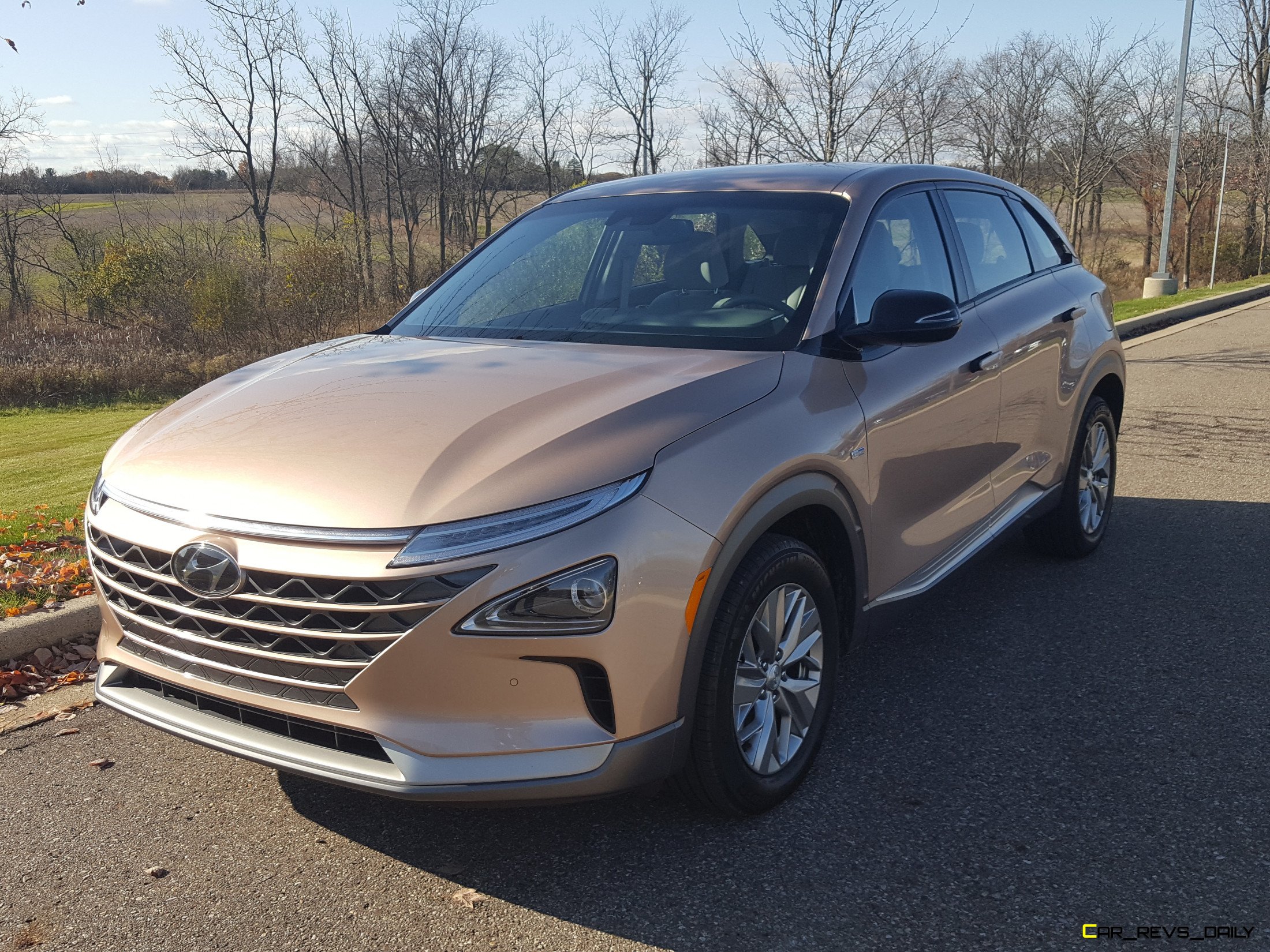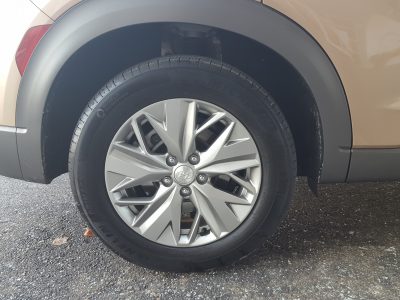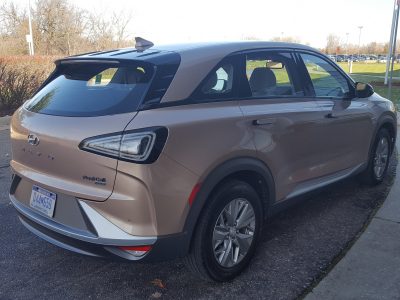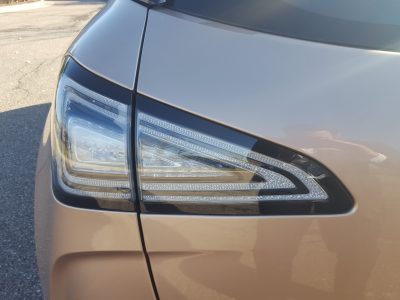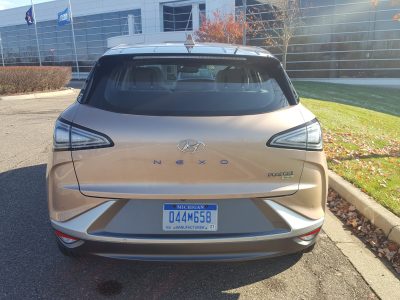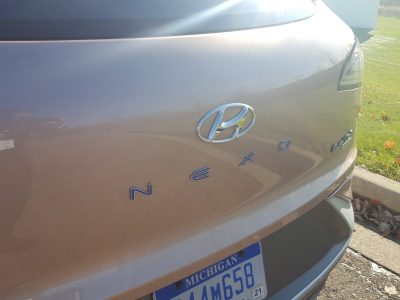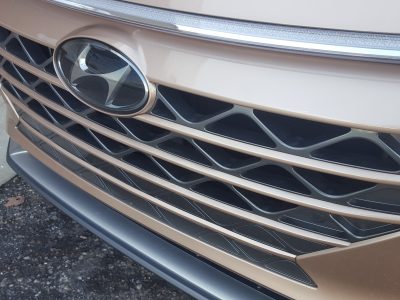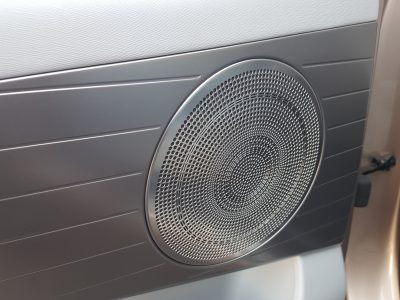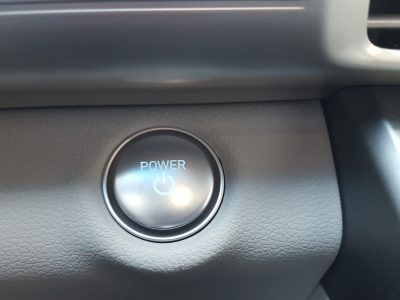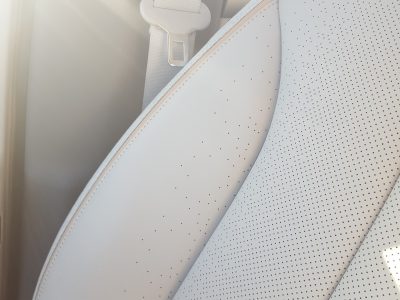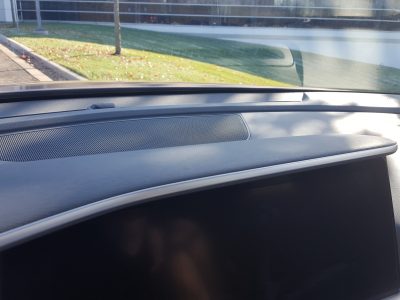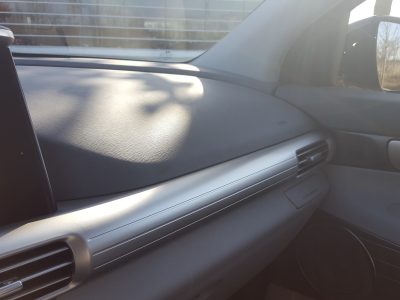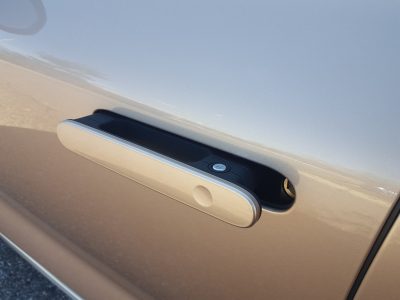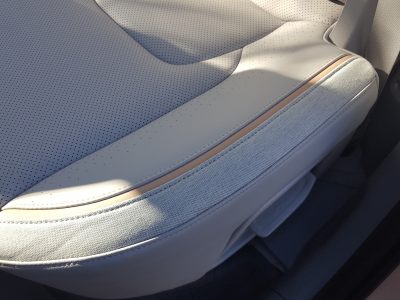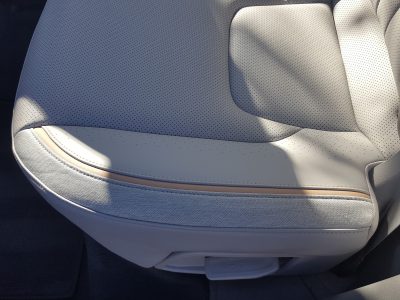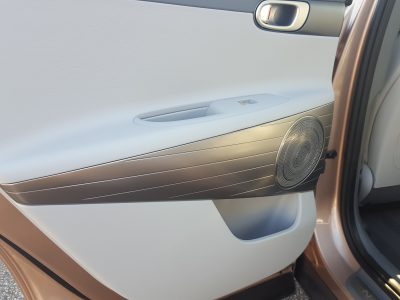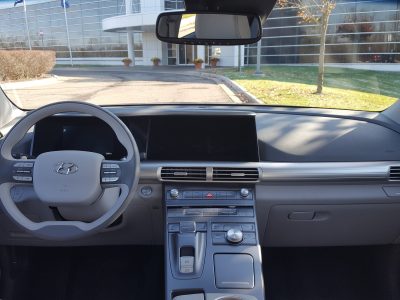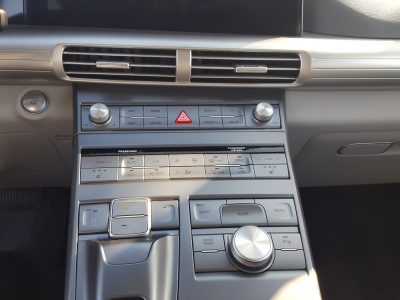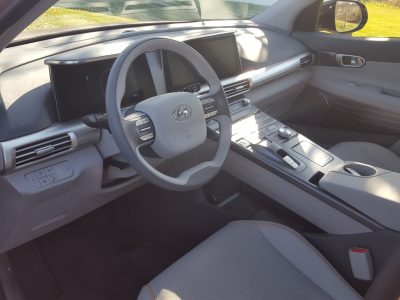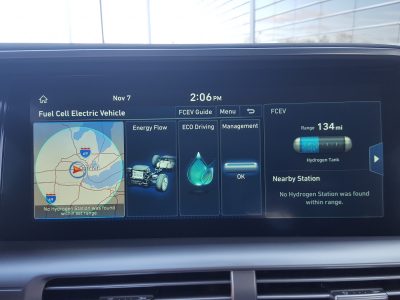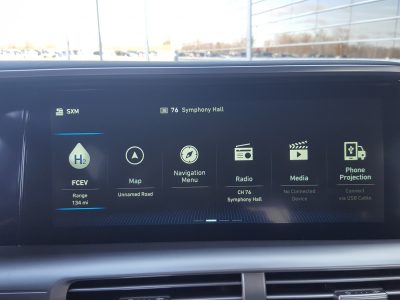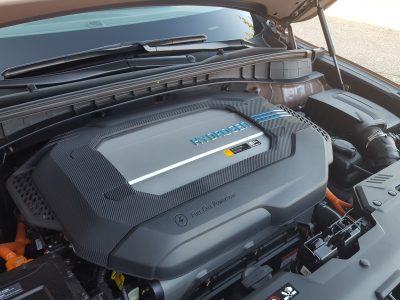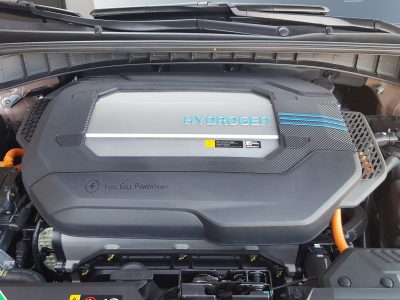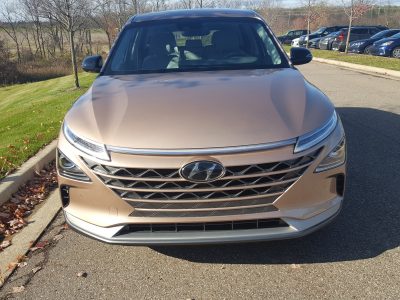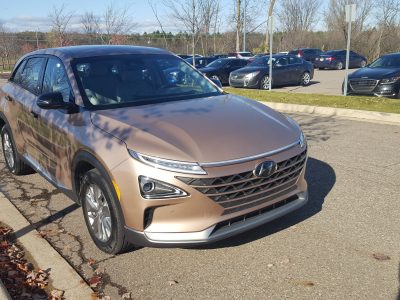Hyundai is on a roll when it comes to hydrogen. A key player in a green segment that is still attached to the hip of EV and PHEV vehicles. Hyundai still sees tremendous potential in hydrogen as a viable alternative fuel source. The company has had a long running program in California, and even recently unveiled a hydrogen powered semi truck concept. But, the Korean car giant still needed a viable platform to test its hydrogen technology, and it has unleashed the latest chapter in its green exploits, the 2019 Hyundai Nexo, but is the Nexo the next key chapter in Hyundai’s goals of nationwide hydrogen acceptance? We were eager to find out, and traveled out to Hyundai’s HATCI facility in Superior Township, Michigan to see what the hype was indeed all about.
A Unicorn Outside Of Its Environment:
Before we get into the Nexo’s finer attributes, we might as well address the big white elephant in the room, and that’s just how difficult it is to properly fuel the Nexo beyond it’s typical digs in California. Unlike that state which has a dedicated (albeit sparse) network of hydrogen fueling stations for people to use. Michigan has not fully embraced this type of fuel yet, and as a result, the state currently has no hydrogen fueling network to speak of, with the only fueling station being at HATCI itself. As a result, Hyundai limited our excursions to a specific route to help keep the Nexo from running out of hydrogen far from home base, but even this brief amount of exposure was still enough for us to learn some key things about this futuristic vehicle.
For starters, the Nexo has arguably the most visually distinctive styling in the utility market today. The front fascia features elegantly crafted headlights that were also tailor made to maximize aerodynamics. While they adopt the two segment motif that we have seen in other Hyundai entries like the smaller Kona CUV, the big front grille looks aggressive, and it plays a big role in helping the Nexo stand out in urban traffic. The side profile is relatively plain, but there are scattered design elements distributed about to help keep attention focused on it. The rear fascia is arguably the dullest part of the design, but considering that is also the typical calling card of many utilities these days anyway, we are willing to give it a free pass. We also like the attractive LED taillights which are not only the most exciting piece of visual eye candy present back there, but they also aim to give the Nexo a distinctive appearance at night. While the Nexo may not be as sci-fi looking as the Tesla Model X, we do like the way that Hyundai designers have managed to incorporate style, function, and traditional values into a truly unique mixture that should please a wide range of buyer tastes.
Buttons As Far As The Eye Can See:
The interior of the Nexo is just as futuristic, with Hyundai designers opting for a relatively clean design that does make good use of high quality materials. There are some cheap plastics scattered there and there, but it is not numerous enough to really detract from the broader point that Hyundai designers were trying to achieve here. The seats in our tester were very comfortable, and while we wished we had larger amounts of side bolstering, we were pleasantly surprised at the amount of lower and upper back support that they provided. Head and leg room are also quite good, and even rear passengers will find plenty of comfort in the Nexo’s rear seats. The use of lighter colors is a nice departure from some of the darker hues seen in the bulk of the utility segment, and we really adore the way it meshes with the bold exterior paint.
A prominent offender however is the center console which inadvertently morphs into arguably the most frustrating part of the cabin. While current Porsche models do their best to overwhelm the masses with their sheer abundance of buttons, even these German performance icons can’t hold a candle to the mass of buttons found in the Nexo. While we like using buttons versus a purely screen focused control layout, the Nexo is a classic example of having too much of a good thing. With over 30 different buttons presented to the driver and front passenger, it does take some time to figure out what every single one of them does, and the small font as well as the way they are closely clustered together can make using key functions very difficult when out on the move. We have seen less buttons on some military aircraft, and we really hope that the next iteration of Nexo will reduce the button count to help improve the interior experience.
As for the rest of the interior, we really like the way Hyundai packaged the battery as well as the hydrogen fuel tanks to help minimize their intrusion into the floor which helps the Nexo have good amounts of rear leg and foot room. The UVO infotainment system of the Nexo (button madness aside) is housed in a big screen that delivers crisp image quality, and offers commendably fast responses when accessing certain menus. The screen can be operated either by touch, via the assortment of buttons, or an I-Drive-esque control wheel. The gauge cluster is also housed in an equally large screen, and the information on hand is very reminiscent of current Genesis models like the G90. Both screens feature hydrogen centric layouts exclusive to the Nexo, with the bulk of them being found in the infotainment screen. Our favorite feature however had to be the Nexo’s nifty Blind-Spot view monitor. We first met this feature in the Kia K900, and like in that big four door, the system uses cameras to help give drivers a camera feed of their blind spots when the corresponding indicator is turned on. we wish more automakers offer this system since it does play a big role in raising the safety bar for whatever vehicle it is equipped to.
Performance And Efficiency, A Winning Combination
Power for the 2019 Hyundai Nexo (2020 models arrive with minimal changes) comes from an electric motor that is good for 161 horsepower and 291 lb-ft of torque. For comparison, a petrol powered Hyundai Tucson offers either 161 horsepower and 150 lb-ft of torque or 181 horsepower and 175 lb-ft of torque. When compared to the Tuscon, the Nexo’s performance figures are actually on par, and while the 161 horsepower on hand may seem a bit paltry at first glance, the 291 lb-ft of torque is very noticeable, with the Nexo having good off the line grunt when briskly departing from stop lights. Electricity from the hydrogen fuel cells as well as the regenerative brakes is stored in a lithium ion polymer battery, with Hyundai engineers going to extreme lengths to ensure that the whole setup stays safe in the event of a crash. Fuel economy for the Nexo (like others of its type) is measured a bit differently, with the EPA measuring it in MPGe versus giving it traditional fuel economy figures. In this instance, base Blue spec Nexos like our tester can achieve 65 MPGe in the city and 58 MPGe on the freeway. For Limited grade examples, their figures are slightly lower at 59 MPGe city and 54 MPGe on the freeway.
In short this translates to roughly over 350 miles of range for both Nexo variants, which is a big time improvement over the Tuscon FCEV that Hyundai made prior to the appearance of the Nexo. But moving beyond the range figures, and the Nexo’s handling manners are roughly on par with the rest of the segment with the FCEV offering good amounts of ride comfort and the eerie silence generated by its futuristic powerplant. Hyundai engineers equipped the Nexo with rear multi-link suspension, and despite the addition of low rolling resistance tires, the SUV still handles quite well. It’s not a performance SUV by any stretch of the imagination, but the Nexo should still make believers out of skeptics especially when going down a scenic country road.
Value Quotient:
As mentioned at the beginning of our review, the Nexo is a very rare sight elsewhere in the country, with the environmentally friendly SUV being only available in select parts of California. If you are in one of the regions that qualifies for the Nexo program, base Blue models like the one we experienced start at $59,395 for the base Blue model, with range topping Limited variants starting at $62,895. While these figures may seem a bit steep at first glance, there are a number of incentives buyers can take advantage of to help lessen the financial bite. California for instance is offering buyers a rebate of up to $5,000 for purchasing one, while Hyundai is also giving Nexo buyers hydrogen fueling cards to cover the first three years of ownership which are worth about $13,000. The Nexo is currently the only fuel cell equipped SUV on the market and as a result, it does not have any direct rivals, however it does have to ward off the appeal of traditional SUV hybrid models like the Higlander and the Explorer, as well as more traditional EV utility choices like the Tesla Model X.
While the Hyundai Nexo may still be a science experiment when viewed at face value, it does show that hydrogen fuel cells have made strides both in terms of range and practicality. However, it will still be a very long time before this fueling option moves beyond California, and when it does, there will inevitably be questions about how a FCEV can handle the rigors of true four season motoring. At the end of the day though, the Hyundai Nexo is a very good stepping stone, and we look forward to seeing how Hyundai follows up this potent FCEV chapter over the next few years.

Carl Malek has been an automotive journalist for over 10 years. First starting out as a freelance photographer before making the transition to writing during college, his work has appeared on numerous automotive forums as well as websites such as Autoshopper.com.
Carl is also a big fan of British vehicles with the bulk of his devotion going to the Morgan Motor Company as well as offerings from Lotus, MG, and Caterham. When he is not writing about automobiles, Carl enjoys spending time with his family and friends in the Metro Detroit area, as well as spending time with his adorable pets.

